A Holistic Approach to Anxiety, Panic Attacks, & Nervous System Dysregulation
- Juna Mustad
- May 26, 2022
- 30 min read
Updated: Jul 11, 2023
9 Essential Tools for Navigating a Body-Soul Shutdown
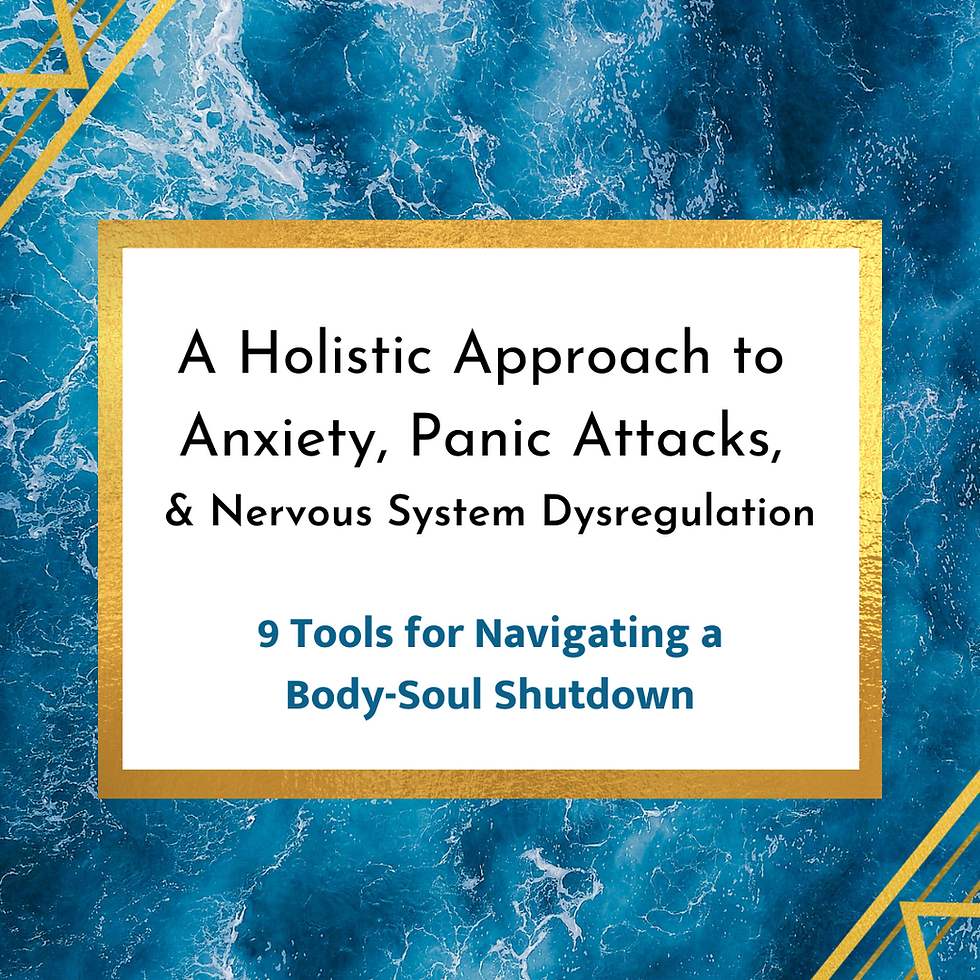
In August of 2020, in the heart of our global pandemic, I went through one of the most terrifying and disorienting experiences of my life. Some people would call it a nervous breakdown or a “dark night of the soul.” Others would say it was a mixture of mold toxicity, burnout, and the surfacing of unresolved trauma.
I feel that the most accurate description is to call my experience a “Body-Soul Shutdown.”
During my body-soul shutdown, everything in me suddenly broke down. I lost my ability to regulate my nervous system, and I could not sleep for days on end. For two weeks, I was experiencing 24/7 full-blown panic attacks, depression, insomnia, and incessant terror thoughts. After those initial few weeks, it took me another 6-12 months to start feeling normal-ish again.
Before all this happened, I worked as a Somatic Experiencing Practitioner (doing trauma work with clients) and as a mindfulness and intuitive coach. When my body suddenly shut down, I was brought to my knees—humbled and shocked that this was happening to me. I mean, I was the one who supported clients in deep and challenged states, and here I was, completely losing my shit.
A body-soul shutdown is both a physiological and spiritual experience.
Our bodies are having a physiological response to something (like an illness, disease, stress, trauma, etc.), and on a spiritual level, I believe that chronic anxiety and panic attacks are “Soul Tantrums.” Something is out of alignment in our life, and our Soul has exhausted all other efforts to get our attention, so it now resorts to “tantruming” to get us to listen.
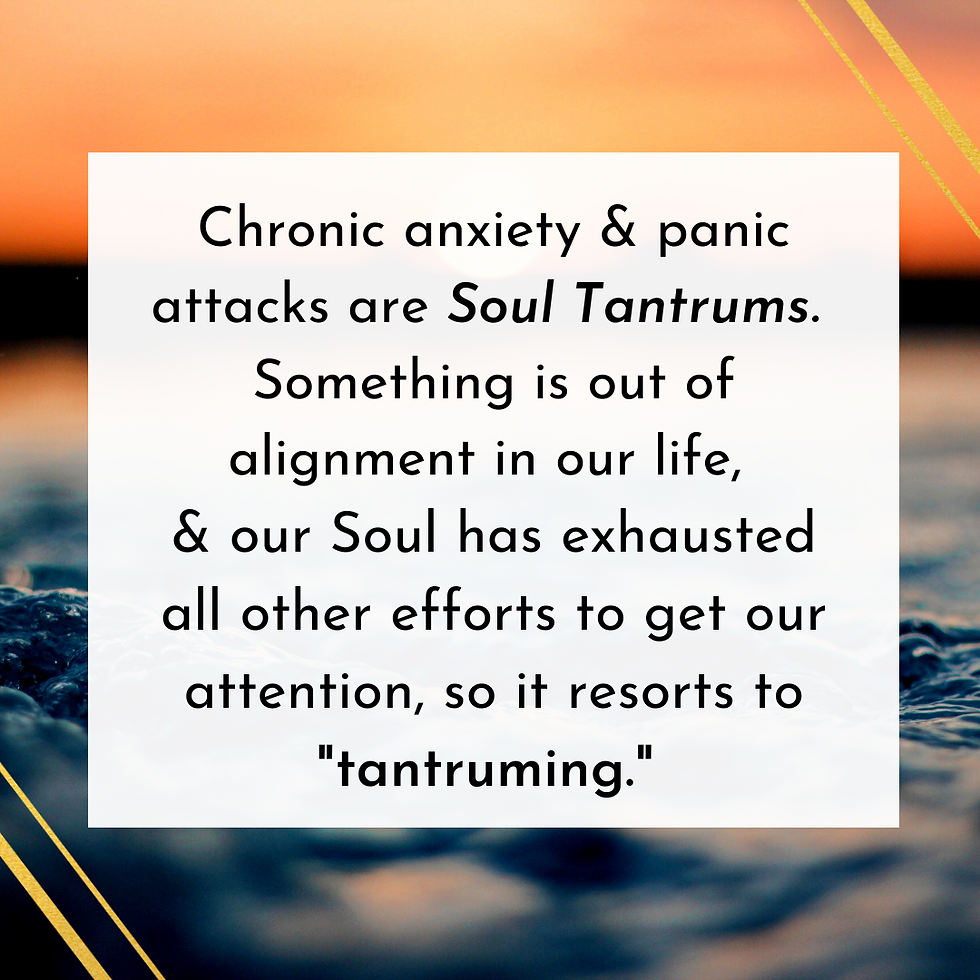
Most of us tend to shame and stigmatize these experiences (especially when they have a mental health component). However, when we compassionately turn towards them, with curiosity, and a willingness to LISTEN to the deeper messages being communicated, we open to a transformative integration with our True Self.
I have received many challenging growth opportunities and life-changing gifts from my experience. One of the greatest gifts is that it has given me a whole new depth of compassion and insight into how to best work with anxiety and nervous system dysregulation. Since then, I have had numerous clients, friends, and acquaintances reach out to me for guidance as they ride the waves of their own panic attacks, burnout, anxiety, unexpected illnesses, covid symptoms, etc.
Below, you will find a list of the tools, practices, and perspectives that greatly served me during my body-soul shutdown. Many of these tools are based on research and neuroscience, and some of these tools are more spiritually based. A combination of both spiritual and practical tools was instrumental to my healing.
It’s Important to Note: Many months after my “big” experience, I met with doctors and took a series of specialized lab tests that revealed that I had severe mold toxicity. I believe my body-soul shutdown was largely caused by severe mold toxicity. I share this because I think, in addition to using any of the tools I share here, it is crucial to seek medical support. Everything that is shared here is not intended to be a substitute for professional medical advice.
Symptoms of a Body-Soul Shutdown
Body-soul shutdowns can get triggered by a variety of things: a sudden illness or accident, burnout from overworking, heavy metal toxicity, the death of a loved one, hormonal changes, Lyme disease, mold toxicity, a divorce, the surfacing of trauma, an out of body experience, a significant spiritual experience, etc. As a result, they can generate a variety of physical and emotional symptoms.
Below are the symptoms that I experienced in the Fall of 2020:
Shortness of Breath: I experienced constant tightness in my chest. I could not take a full inhale for six months. I would overly fixate on my breath, and this would cause me to hyperventilate or repeatedly attempt deep inhales, which only exacerbated the panic and tightness in my chest. At night it often felt like my body would forget to breathe, which would cause me to startle awake.
Anxiety: I experienced the greatest terror I have ever felt. It felt like my body was stuck in the “flight” response and all I wanted to do was jump out of my skin. The anxiety created a constant low-level tremor and shaking in my body. For the first time, living in my own skin was excruciating.
Fear Thoughts: I experienced an incessant tsunami of fearful thoughts that would spike my adrenaline. The thoughts would say things like, “You are going to go insane,” “You will stay like this forever,” “Your boyfriend is going to leave you,” “You are going to die,” or “Your bedroom is going to catch on fire tonight.” I felt like these dark thoughts had hijacked my brain.
Dysregulated Nervous System: I could not successfully “down-regulate” or calm my nervous system. My autonomic nervous system felt like it was broken. Reality would feel warbly at times as if I was high on LSD. Loud sounds often felt like I had been punched in the gut. I could not be around people. Sometimes I couldn’t tell the difference between hot or cold water on my skin, and at times I would see strange bright, or swirling lights in my vision.
Inability to use Technology: Technology literally hurt my body. If I looked at screens for a few seconds or tried to scroll Instagram, I would feel off-balance and there would be a pain in my eyes, head, or another part of my body.
Fatigue: I felt extremely exhausted all the time. I could not exercise. Just walking from my bed to the bathroom was so tiring. Sometimes I would take a few steps and need to sit on the ground.
Brain Fog: I couldn’t focus. I couldn’t think straight. It felt like 1,000 cotton balls were stuck in my head, blocking my ability to form thoughts and see things clearly.
Insomnia: I felt a deep terror about closing my eyes and trying to sleep at night. My nervous system was on such high alert that the idea of sleeping did not feel safe. Any time I started to doze off, a negative thought would enter my mind, and I would jump out of bed.
Depression: It felt like I was living inside a black cloud. There was no escaping this deep feeling of heaviness. I had never really struggled with depression before, so this impending sense of doom shocked me.
Acute Body Pain (that traveled around my body): I noticed that there was often a stabbing pain in my heart area. The pain would sometimes subside and then move to my throat or solar plexus. The pain felt more like emotional/energetic pain than physical pain, but it certainly was painful. I noticed the pain became more acute when I would override my needs or not hold a boundary in some way.
I used several different tools and practices during my body-soul shutdown. At certain times, one of these tools would help lessen my symptoms, but then surprisingly, at other times, that tool didn’t work, and I’d feel utterly confused.
I realized that I needed to cast a wide net and have access to a variety of tools and practices. Even with all the best tools in the world, sometimes nothing worked to calm my nervous system. In these challenging moments, I had to learn the art of acceptance and surrender—the most important practice of all.
I hope my personal story, and the following tools and practices, support you in whatever journey you are facing.
Tools for a Body-Soul Shutdown:
1. Nasal Breathing… with a Focus on the Exhale
When experiencing anxiety or panic attacks, it is common to feel tightness in the chest and shortness of breath. Many of us try to breathe faster and harder when we feel this. However, hyperventilating actually activates the sympathetic nervous system (the fight/flight response) and increases anxiety.
To soothe your nervous system, practice nasal breathing (which has been shown to reduce stress) and try taking deep, slow breaths with a focus on elongating the exhale. Slowly inhale through your nose for 4 seconds, and then take an even slower, longer exhale through your nose for 4-6 seconds. Taking a deep, slow exhale sends signals to your nervous system that it is time to turn on your parasympathetic nervous system (the “rest and digest” part of your nervous system).
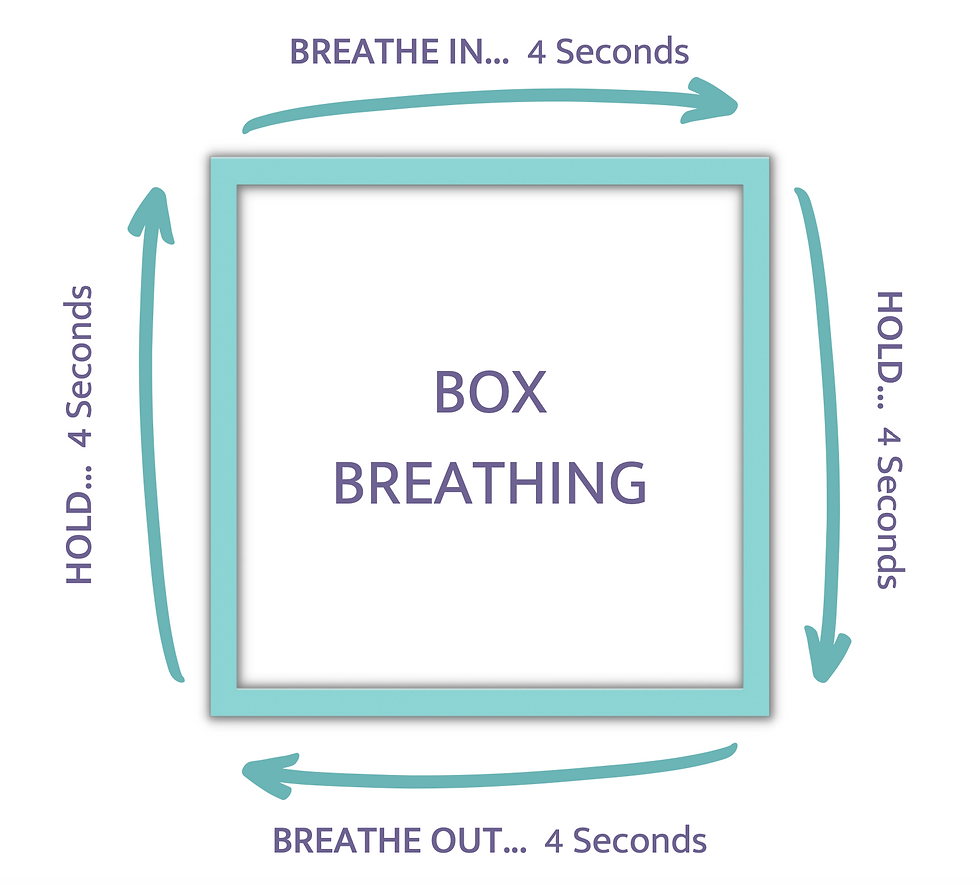
Box Breathing is a simple yet instrumental tool. This involves breathing in for 4 seconds, holding your breath for 4 seconds, breathing out for 4 seconds, and then holding again for 4 seconds. Doing 3 or 4 rounds of “Box Breathing” can reduce anxiety. You can watch a guided video HERE.
Belly Breathing is another supportive tool. Place a hand on your low belly and feel your breath slowly filling up and emptying in your belly. Engaging your diaphragm with each inhale and exhale helps awaken your lungs, sends signals to your body to turn on the parasympathetic nervous system, and keeps you from taking those anxiety-provoking shallow breaths.
A great resource on all things breath is the book Breath: The New Science of a Lost Art by James Nestor.
2. Nip Negative Thoughts in the Bud
I’m a big advocate for doing deeper inquiry and “parts work” to create a healthier relationship with negative or dark thoughts. However, when I was in the middle of a panic attack or experiencing anxiety, there wasn’t enough internal foundation to do deeper work with these parts. Instead, I needed a quick and easy tool to help me regain my footing.
One of the critical tools for me became “Nip that negative thought in the bud”
When I went through my sudden and unexpected body-soul shutdown, my mind (aka. the parts that manage and make up my sense of self) freaked out and quickly became my worst enemy.
My mind was in shock and denial. It was terrified that if this could happen, worse things could happen too. My fear thoughts spiraled into deeper and darker places, which compounded my current symptoms (studies have shown that the fear of having another panic attack is often what triggers subsequent panic attacks, and this was undoubtedly the case for me).
To nip my negative thoughts in the bud, I’d start by imagining that my fearful and negative thoughts were little hungry cookie monsters that lived in my head. I realized each time I’d allow one of these thoughts, I was feeding cookies to the cookie monster. The more I fed him, the bigger and stronger he got. So instead, the moment a negative thought came into my mind, I’d stop the thought in its tracks—nipping it in the bud and redirecting my attention to a new thought or activity.
“Our repeated thoughts shape our brain,” says mindfulness teacher Dr. Shauna Shapiro. Neuroplasticity shows us that when we repeatedly engage certain thoughts, we strengthen and fortify those neuropathways in our brain. In contrast, we shrink those same neuropathways by nipping those negative thoughts in the bud and focusing on healthier thoughts.
I don’t think “nipping thoughts in the bud” is the ultimate solution. Still, it can be a much-needed band-aid to help us reclaim our bodies and minds during a big experience.
During my body-soul shutdown, I used a combination of nipping the thoughts in the bud, and in moments where I felt slightly more resourced, a friend or therapist would guide me in doing some “parts work” (which I share more about below).

When you notice yourself feeding a negative thought, remind yourself, “My repeated thoughts shape my brain. What thoughts do I want to feed right now?” Imagine turning toward the negative thought and say, “Thank you. I know you just want to protect me from even more pain, and this thought is not helpful right now. It’s actually hurting me.”
Instead, redirect your attention to a more positive or uplifting thought. For example, instead of feeding the thought, “I am going to stay like this forever,” see if you can try saying, “I’m going to get through this, and I will be even stronger and wiser on the other side.”
3. Choose Appreciation over Self-Criticism
It is easy to start “Double Arrowing” when we go through something big, sudden, and painful. Double Arrowing is the Buddhist idea that, as we go about our lives, sometimes we get hit by an arrow (an illness, panic attack, losing our job, etc.). This first arrow is sometimes unavoidable, it just happens, and it sucks.
However, the second arrow is optional. We don’t need to jab ourselves with a second arrow, yet most of us do. The second arrow represents how we shame ourselves for getting hit by the first arrow—we get mad at ourselves for having that panic attack or we blame ourselves for getting sick.
Unfortunately, when we Double Arrow, we compound the pain from the first arrow and end up in a hurtful self-beat-up loop. Just like the practice of nipping negative thoughts in the bud, choosing to strengthen the neuropathways of self-appreciation and self-kindness is essential to getting through a body-soul shutdown.
Whenever I noticed myself starting to Double Arrow, I would remind myself that I was compounding my pain and I would shift my attention to small, micro self-appreciations.
I’d practice saying things like:
“Today, I didn’t feed those negative thoughts as much as I did the day before.”
“Today, I left the house. Great job, Juna.”
“Today, I was kinder to myself. Thank you, Juna.”
“Today, I went on a walk. I couldn’t have done that last week.”
“Today, I felt 8% less anxiety than the day before.”
“Today, I felt a little bit of happiness.”
“Today, I held a boundary with someone. That’s a big step. I’m proud of myself.”
What we focus on GROWS.
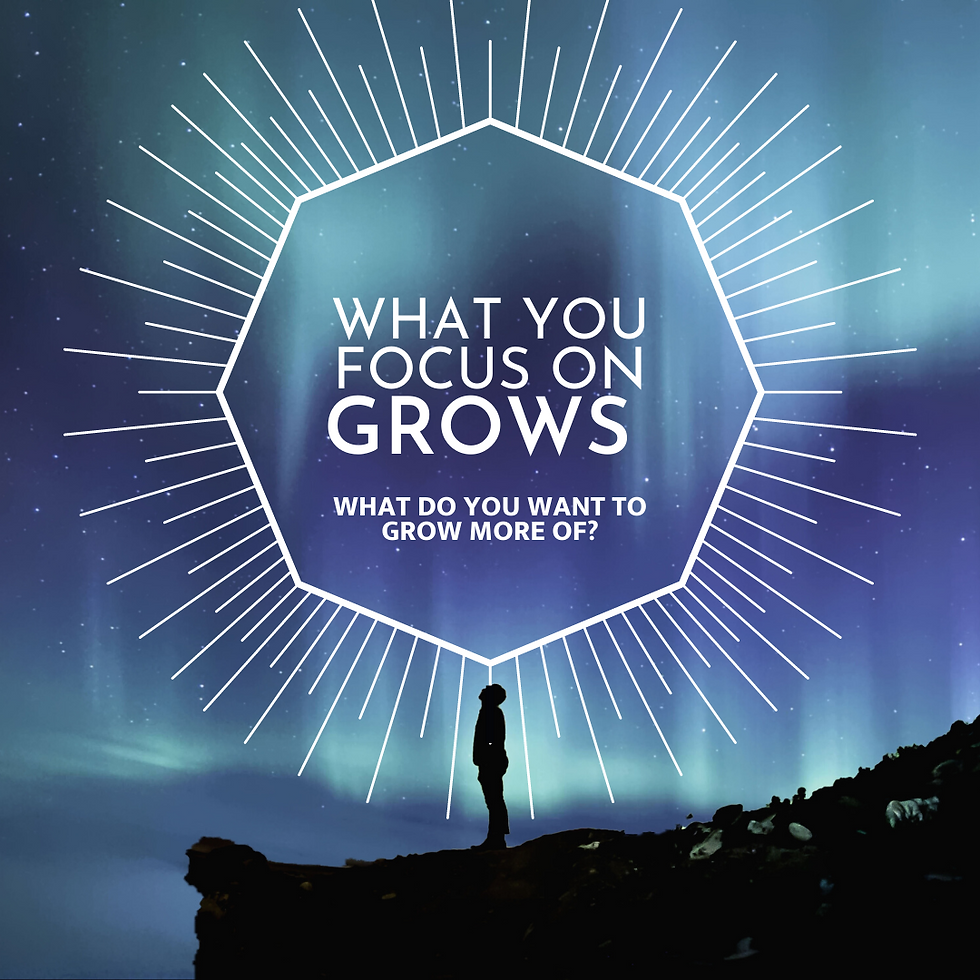
When we appreciate these small wins (some of them might feel microscopic), we support the growth of more of these things. But, when we continue to focus on what is going wrong and feed the cookie monster our negative thoughts, we grow more of that.
Take the time to appreciate yourself every single day. Your body and nervous system are doing everything in their power to get you through this, and they need you to recognize the big work they and you are doing.
4. Activate Your Parasympathetic Nervous System: The Vagus Nerve, Body Postures, & Engaging Your Senses
When we try to rationalize our way out of the flight/flight response, we are literally using our minds to battle our biology. It simply doesn’t work—our hardwired biology will always win. Instead, we need simple tools that work with our biology and help switch on our parasympathetic nervous system.
Stimulating the Vagus Nerve: Research has shown that stimulating your Vagus nerve (the longest nerve in your body that connects your brain to the main organs) plays a key role in activating your parasympathetic nervous system. You can stimulate your Vagus nerve by taking cold showers, singing, putting your feet in cold water, gargling, yawning while making sounds, splashing cold water on your face, humming, making the sound “Vooooooooooo,” and taking deep breaths.
Shifting Your Body Posture: The fight/flight response has a body posture of leaning forward, tense muscles, fast movements, and being on your toes. To soothe your nervous systems, it is helpful to consciously shift your body posture. Try moving slowly, press your back into a chair, drop your shoulders, soften your belly, uncross your legs, and press your feet flat onto the floor. Doing this conveys a sense of “I am ok. I am here. I am safe.” When you shift your body posture, you send messages to your brain and nervous system that you are safe, and that it is ok to relax.
Engaging Your Senses: Your senses are the information source of your nervous system. Research has shown that listening to a pleasant song or smelling an appealing essential oil can bypass the thinking brain and evoke a positive memory, helping create a sense of safety in our bodies. Try inhaling lavender essential oil several times a day. This works because our olfactory system has a direct effect on our limbic system (the emotional and reactive brain). Try playing relaxing music during the day or night. Research suggests that listening to calming music decreases cortisol (the stress hormone).
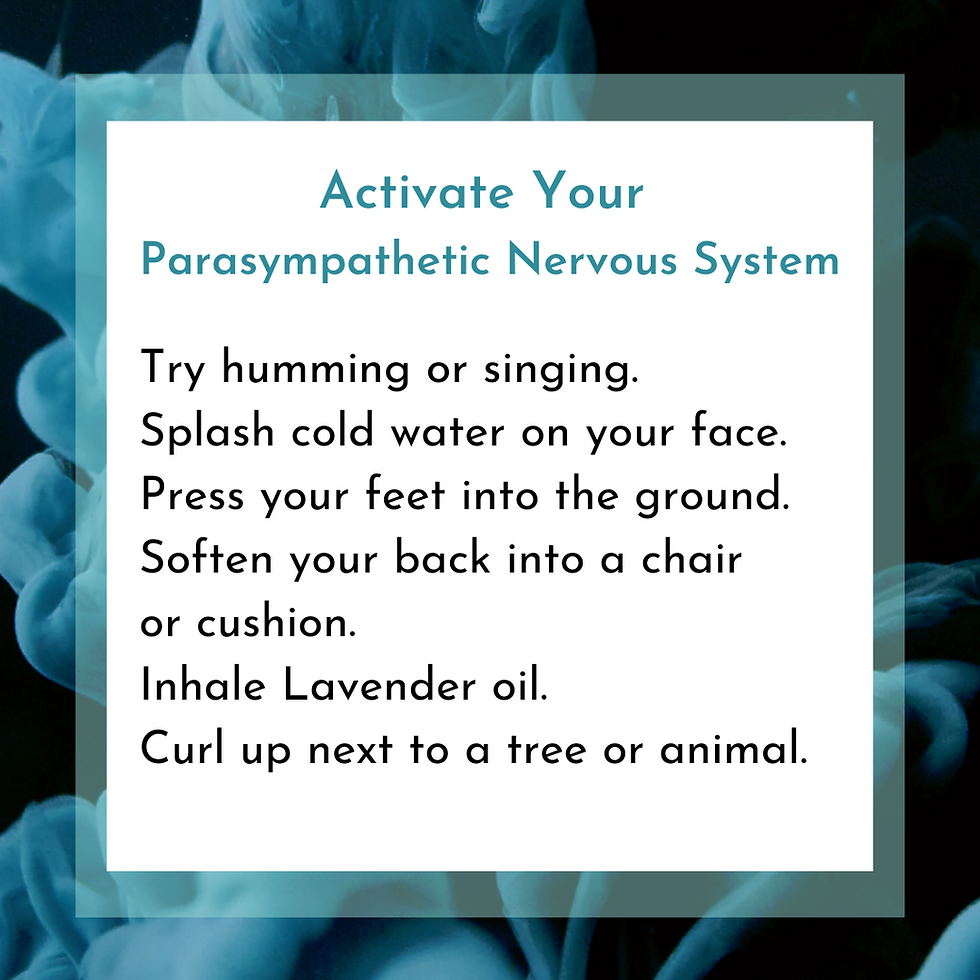
Being in nature also has a profound effect on your nervous system. Practice gently gazing at the sky, watching ants scurry on their path, or curling up next to a loving animal. Nature and animals have an extraordinary ability to soothe your whole body.
During my body-soul shutdown, I would use all of these tools—I would inhale lavender essential oil. I would press my back into a wall or a chair and feel the solidity of it holding me. I would hum and sing to stimulate my Vagus nerve. I would spend evenings slowly crawling around on hands and knees, feeling the coolness and stability of the ground beneath me. I would press my feet into the grass, dig my toes into the earth, curl up next to a sleeping dog, and lean on a sturdy tree.
5. Prioritize Sleep
The first two weeks of my body-soul shutdown were the hardest two weeks of my life. I felt like I was living in a 24/7 bad-acid-trip. What intensified this was the fact that I was not sleeping. Some nights I did not sleep at all; other nights, I’d get an hour or two max.
There is a reason that sleep deprivation is used as a means of torture and interrogation. It makes us feel like we are going insane. I felt like I was losing my grip on reality.
After two weeks of super limited sleep, a good friend intervened. He said, “Juna, we need to change this right now. Without sleep, your body cannot heal. You need a little sleep to start to heal from whatever is happening.”
He suggested that I try taking a sleeping aid. I had never taken a sleeping aid before and even secretly judged people who did. This felt super edgy. I didn’t know how my body would respond to medication and I was afraid to get addicted.
I met with a doctor and cautiously started taking a low dose of a sleeping medication just once in the evening. This turned out to be a massive turning point in my journey. Getting 4-5 hours of sleep each night stabilized me more than anything else. My friend was right; I could slowly start to heal and recover.
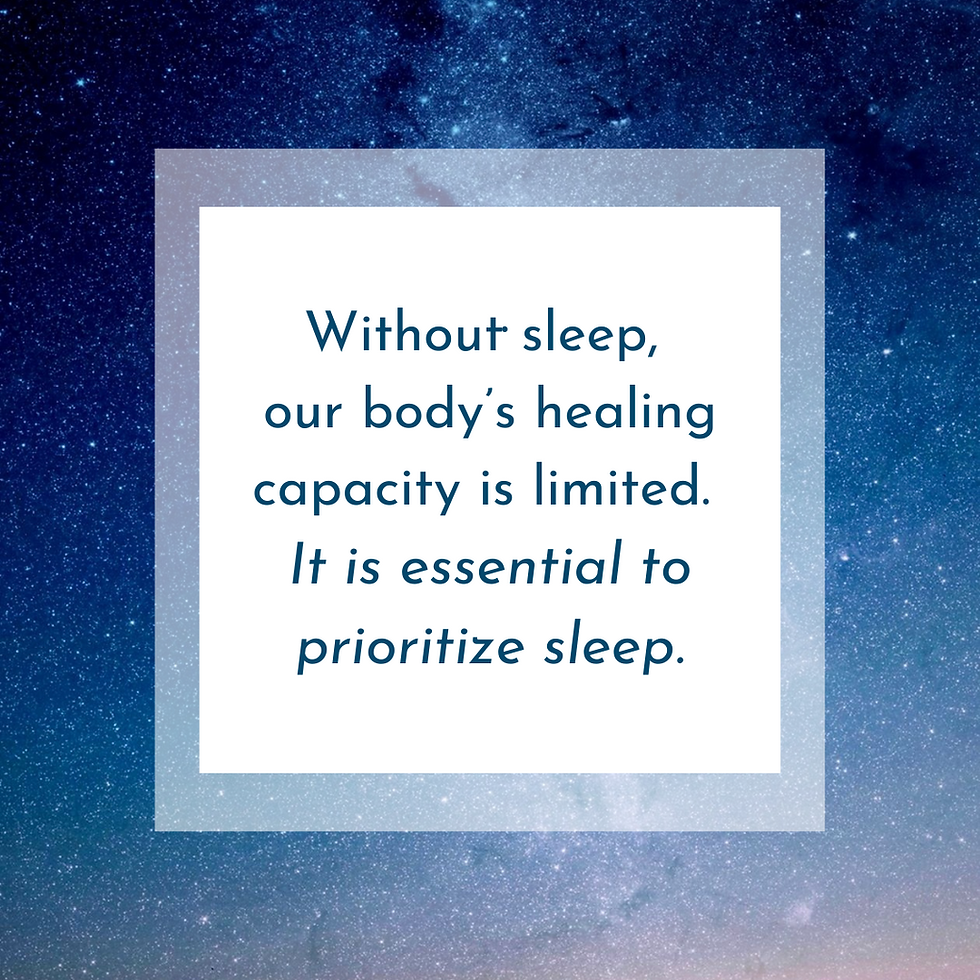
I feel hesitant to share about my experience with a sleeping aid… mainly because some people have severe and adverse reactions to sleeping medications and/or get addicted to them. In my experience, it is essential to seek professional medical support if you are thinking about going on medication and when you want to get off them (I worked with a doctor for three months to wean myself slowly and safely off the medication).
I also discovered that there are great natural methods to support good sleep, like taking magnesium or melatonin before bed. I found it helpful to stay away from technology or anything stimulating, and instead listened to calming music or a peaceful audiobook to give my mind something soothing to focus on. If I was unable to sleep at night, I’d take little mini naps during the day (even if I couldn’t fall asleep, the rest still benefited my body).
Without sleep, our body’s healing capacity is limited. It is essential to prioritize sleep.
6. Listen to your Body & Set Boundaries
During my body-soul shutdown, I began to set boundaries with everyone and everything in my life.
At first, I resisted the hell out of doing this boundaries thing. However, anytime I would override my boundaries, my body would flare up with so much pain or anxiety that I had no choice but to listen.
For the first time in my life, my body was acutely hypersensitive to my every word, action, and gesture. If I did anything (and I mean ANYTHING) that was out of alignment with myself, different areas of my body would ignite with a painful sensation.
I started to notice a pattern where anytime my throat felt tight, it was because I had spoken to someone I didn’t want to talk to or said something that wasn’t fully authentic.
One time a female acquaintance came up to talk to me. As she approached, my throat immediately tightened. It was as if my body was screaming, “Don’t you dare talk to her! Your energy is for you right now, not her.” It shocked me, but I realized that if I dismissed this, my throat might be tight for hours or days afterward. It was never worth it. Consequently, I chose not to speak to this woman. She was mid-sentence and instead of engaging with her, I smiled, gave her an awkward ‘namaste’ with my hands, and walked away. It was uncomfortable but worth it.
I came to realize that if someone would engage with me or ask something of me, and it wasn’t an undeniable-100%-full-body-fuck-Yes, then it was a No. For the first time in my life, I was radically honoring my body’s boundaries.
My body-soul shutdown had thrown me into the heart of Boundaries-Bootcamp and my inner people-pleaser was getting a full workout in the art of saying No. It was painful and profound schooling.
If you are going through a body-soul shutdown, I offer these tips:
Be utterly selfish. Your precious life force energy needs to be conserved right now.
Anything or anyone that makes your body feel worse needs to go. Namaste. Goodbye.
Be bold and radical with your boundaries. If it isn’t a 100%-full-body-YES, then it is a No. “No” is a complete sentence; practice saying it.
If someone is trying to support you and it doesn’t feel helpful, communicate it immediately or end the interaction.
Be willing to ASK for what you need (be detailed and specific).
Be willing to RECEIVE support. You need far more support than you realize.
Listen to your body. It will give you subtle and not-so-subtle cues about what it wants and doesn’t want. Act on these messages and don’t wait for the “perfect moment”—the perfect moment is now.
It felt extra terrifying to initiate new boundaries with family, friends, and clients when I was in such a raw and vulnerable place. But let’s be honest, holding boundaries was always an issue for me. I wanted to wait until I felt healthier and more stable to communicate these boundaries, but my body wouldn’t let me. The best time to start holding boundaries is NOW.
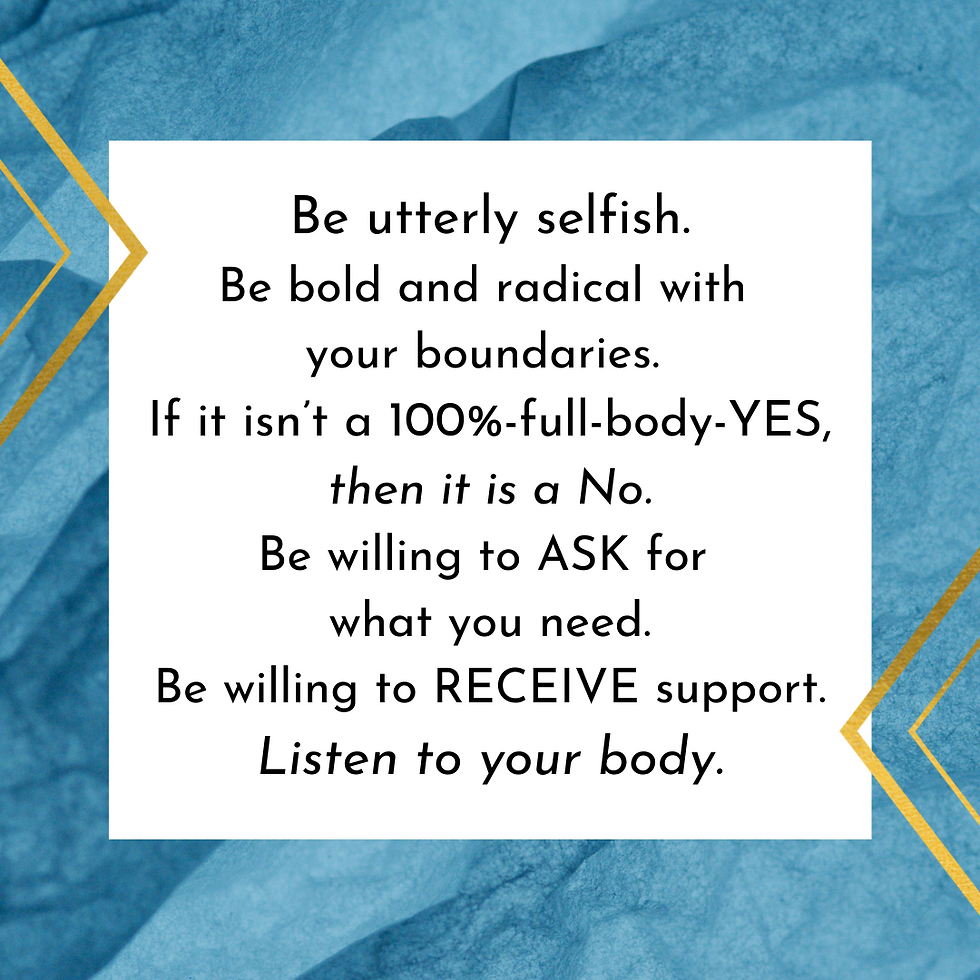
I can see now how my people-pleasing tendencies played a significant role in getting me into this mess. If this resonates, then holding boundaries, learning to receive, and listening to your body are vital allies in your healing and recovery.
As you begin to connect with your body and open to its messages, watch the tendency to want to strong-arm your body (so to speak) into cooperation. I’ve seen friends and clients get angry at their bodies during their body-soul shutdown- as if they could shame their bodies into stopping the painful symptoms. Unfortunately, this always backfires (remember: Double Arrowing compounds the existing pain).
Instead, trust the innate intelligence of your body. You are traversing mysterious, uncharted territory right now, and your body is giving you the roadmap to get through this.
7. Parts Work & the Power of Curiosity
Yes, I was suffering from severe mold toxicity (which I discovered months later), and I intuitively sensed that my body-soul shutdown was happening, at least in part, because Life (or my Soul) was trying to communicate something with me that wasn’t just about an illness or disease. Unfortunately, most times, I was so dysregulated that I couldn’t open to these deeper messages.
When I did feel a little more resourced, I would ask my partner, therapist, or a friend to help me do some “parts work.” I would imagine I could communicate with different parts of myself that lived inside my body to better understand their needs as I was trying to heal.
For instance, if I was experiencing a gripping pain in my heart (a pain that felt more energetic than physical), I would first start with noticing the sensations. I’d try not to judge whatever I was feeling in my heart and instead see if I could meet it with true kindness and curiosity. The neurotransmitter of curiosity is dopamine. So, if I could be curious, I was giving myself a little hit of dopamine (the feel-good hormone).
I would place my hand on my chest and imagine I could talk with this part in my heart. I would ask, “How are you?” or “What do you most want me to know right now?”
Sometimes I wouldn’t hear anything. But if I was patient and truly curious, at times a random word, image, or feeling would pop up, and I would know my heart was communicating with me.
One time, when I was doing parts work with my solar plexus area, I heard the word, “Stop!”
I felt confused, “Stop? Stop what?”
When I brought compassion and curiosity to my belly area, I heard this part say, “Stop giving so much.”
My mind was suddenly flooded with images of myself over-giving with friends and family and over-extending in sessions with clients. I saw moments when I felt exhausted and needed to rest after a long workday of 8+ clients, but instead, I was pushing myself to help someone. I sensed this part in my solar plexus part was super angry about this.
I empathized with this angry part. I said, “Wow, I totally understand why you feel angry. I haven’t been taking care of myself and instead, I’ve been taking care of everyone else.” I vowed to make significant changes in how I was relating with family, friends, and work.
Parts work works. The moment I made this vow, the pain in my solar plexus disappeared. Like, COMPLETELY DISAPPEARED. The excruciating pain in my solar plexus (that had been there all day) was suddenly gone. It was mind-blowing.
After that experience, I did parts work again and again with my throat, heart, and solar plexus (these were the main areas of strong sensation and pain). Almost every time, when the part felt heard and I had agreed to take action, the pain would lessen or disappear.
Here are six steps to help you connect with an inner part. I highly suggest enlisting the support of a therapist, coach (trained in Internal Family Systems), or loved one skilled in holding space:
1) Connect with the Part: Place your hand on an area of your body where you feel some uncomfortable sensation. Take some deep breaths and notice the sensations there. Try not to judge anything that arises and generate curiosity and compassion instead.
2) Open the Communication: With your hand on this area, imagine that you are meeting this part. Say hello and be open to anything it shares with you. You can say, “Hello, how are you?” Or “I’m curious, what do you want to share with me?” This part might communicate via images, feelings, words, or emotions. Trust whatever randomly pops up.
3) Active Listening: Stay curious and open to anything it shares with you (even if it is inconvenient or you don’t like what it is sharing). Keep inviting the part to share more. Ask it, “Is there anything else you would like me to know?”
4) Empathize with the Part: Genuinely empathize with whatever this part shares with you. You can say, “Yes, I really understand why you feel that way.” Notice how the part responds.
5) Get to the Needs: Now, ask this part what it needs. You can ask, “How can I best support you?” Or “What do you need right now?” Our inner parts act out when their needs aren’t being met, so this last step is really important. Even if you can’t fully take action on what this part needs right now, how can you negotiate with it to give it some of its needs?
6) Appreciation: Thank this part for connecting with you. Again, even if you didn’t like what it had to say, appreciate that it trusted you enough to show up. Appreciation, kindness, and curiosity help us build a bridge to our inner parts. Lastly, notice how your body feels now and if any of your physical discomfort has shifted.
All your parts are like inner children and these children need to be heard and supported, otherwise, they act out.
Some of your inner parts may have played a significant role in creating your body-soul shutdown. These parts need you to listen to them. You may have other parts that feel utterly terrified you are going through this big experience. Until you tend to them, they might continue to magnify your anxiety, pain, and nervous system dysregulation.
The pain and discomfort I felt during my body-soul shutdown got so acute that I finally promised my inner parts I would support them by making some radical changes in my life. I promised my parts that I wouldn’t over-work anymore, I would no longer act as my mom’s therapist, I would end certain friendships that had become toxic or one-sided, I wouldn’t coddle clients anymore, I would no longer over-give to friends and family, I would raise my hourly rates, I would take three months off work, and I would hold better boundaries with everyone in my life. I made these promises, and I took action on all of them.
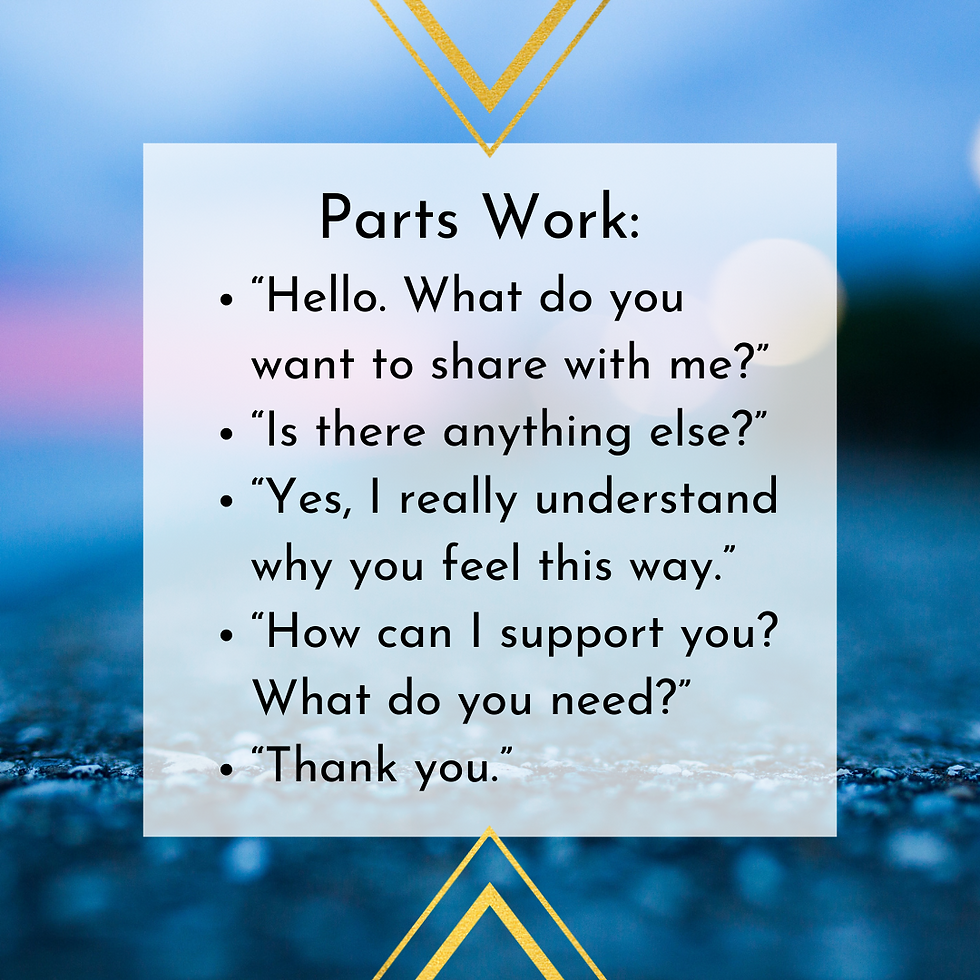
Our inner parts won’t be satisfied with empty promises; they need us to take action too.
Parts work was truly instrumental to my healing. On many occasions, I didn’t want to hear what my parts had to say, but I needed to hear it. My parts were highlighting a life-long pattern of people-pleasing and over-giving that needed to change.
To dive deeper into parts work, check out the book No Bad Parts by Richard Schwartz (the audio version has powerful guided practices to help you connect with your parts).
8. The Art of Acceptance & Surrender
I did not want to accept the fact that I was going through this torturous body-soul shutdown and there was no bloody way I would surrender to this experience. The idea of acceptance and surrender just seemed like some new-age-spiritual-bypass-bullshit.
So instead, each day, I waged war with my reality.
I was stuck in an interminable nightmare and kept trying to shake myself awake. I spent the first month or so in denial. I was clinging to the shell of my old self and grasping at the promise of a quick fix solution so I could return to my former life.
I’d recycle the same thoughts again and again, “If I could just find the perfect tool or technique, this will be over.” Or “If I just fix the core wound or trauma that triggered this, this will end.” Or “If I could find out if this is an illness or disease, then I could take the medication to make this go away.”
Meditation teacher and monk, Shinzen Young says, “Suffering = pain x resistance.”
The more I resisted the emotional and physical pain of my body-soul shutdown, the more I suffered. So, I suffered.
A dear friend saw how much I was suffering, and she helped me start to inch towards cultivating acceptance. My friend shared that acceptance wasn’t the same as wanting this to happen. Instead, acceptance is simply a deeper recognition that this is my reality right now, and if I can be with it, then I can BE with myself in it.
Acceptance is a willingness to meet this moment with your compassionate presence. Even if there is pain or discomfort, true acceptance opens you to meet YOURSELF more fully in the moment. When your interior ground is fortified with presence, you can see clearly and take aligned action.
To practice acceptance, I’d place my hand on my heart and say to myself, “This is what is happening right now. And it might be here for a little while. Can I be ok with that? Can I love myself in this moment? Can I be HERE with myself in this moment?”
If I’m honest, I initially tried this acceptance thing with the secret hope that it would make my body-soul shutdown disappear. But unlike the tools above, acceptance wasn’t just another technique I could use to manage my symptoms. Instead, the practice of acceptance felt like a doorway that helped me compassionately land here, in my body, and in this experience, so that I could open to an even more profound and mysterious portal—Surrender.
The art and practice of surrender is a deeply sacred and inexplicable process. I hold it with great reverence. I think everyone experiences it uniquely, but I will do my best to describe my experience…
In the rare moments when I surrendered to my body-soul shutdown (not just conceptually but with every cell in my being), I experienced the most sublime ecstasy and freedom.
One way to think about it is:
Pain x Resistance = Suffering
Pain x Surrender = Freedom
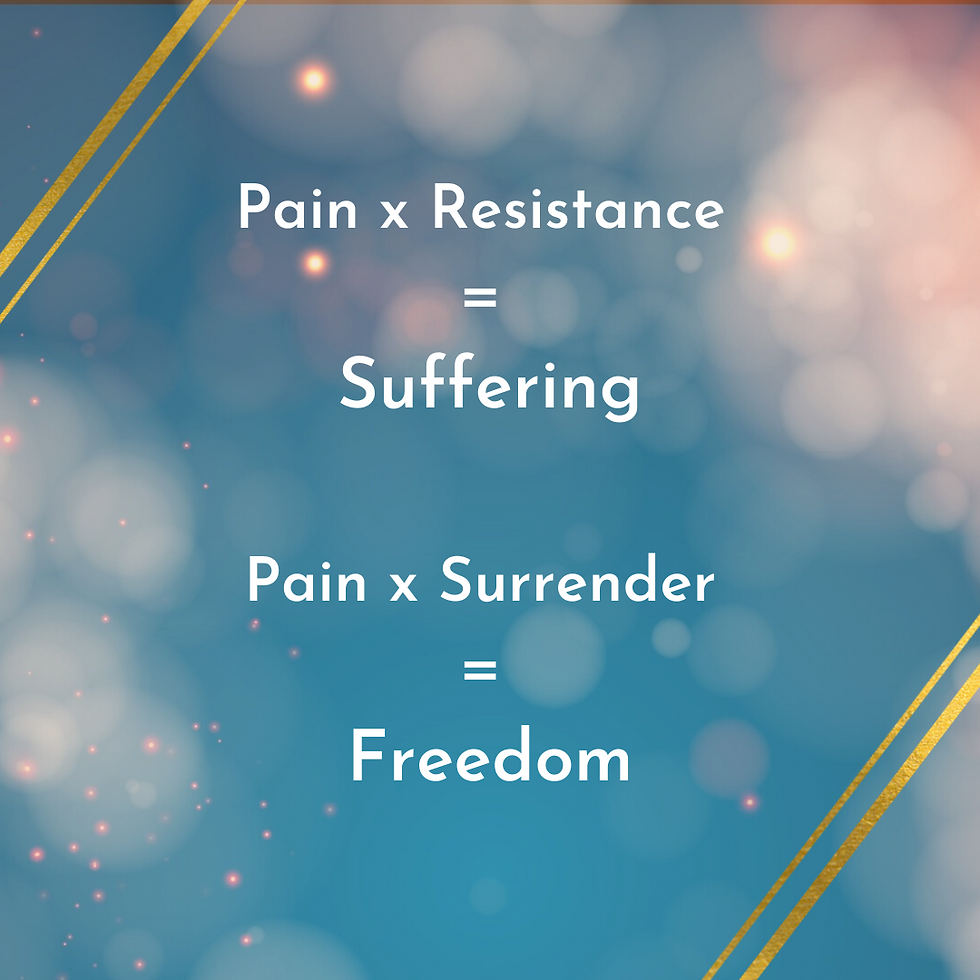
I recall many nights when I was unable to sleep, and it felt the inner darkness had hijacked my body and brain. It felt similar to the times I’d taken ayahuasca or psychedelics and journeyed to the underworld (and those experiences were a crucial touchstone for me).
During these evenings, it felt like I was being taken for a ride into the vast hell realms of my Soul. I was facing death—but it felt worse than death because I was being slowly annihilated and consumed by the blackness. I’ve never felt such extreme terror in my life.
My body would be tremoring and shaking uncontrollably, and I’d be gasping for air. I thought I was going insane. The thick, black water was closing in, and all I could do was fight for my sanity and wildly grasp at any shred of relief. But nothing worked.
Then I’d finally do the one thing that every part of me resisted. I would let go.
In those moments, letting go wasn’t the same thing as collapsing or giving up; instead, in full presence, I would open fully to the pain. I would open fully to the terror. I’d turn towards it and consciously submerge myself in the ocean of blackness, until there was no more me, and no more it to push against.
This is surrender.
To let go in the subterranean depths of hell, pain, grief, and terror. To open. To welcome all of it, into you. To merge with you. Until you dissolve, and it dissolves, and there is nothing, and Everything.
In this space of surrender, something surreal would happen. I’d experience pure ecstasy. Pure sublime bliss. The darkness hadn’t killed me. I was still here. But I wasn’t alone. The sheer beauty of this experience took my breath away. Tears streaming down my face, I’d feel the grace of the Divine holding me, breathing me, loving me.
Here I am. Here I have always been. THIS. Yes, this.
I’d be in this transcendent union with the Divine for several minutes or even hours.
But then a thought would enter my mind, “I’ve arrived! The pain and terror are gone now. I’m on the other side. I’ve done it. Phew!”
And then on cue, another thought, “Oh no, what if this doesn’t last? What if I go back to what I was experiencing before? Oh no, I need to hold onto this bliss feeling!”
The moment I began to cling, the slow tremor of bodily activation would begin again, and the black abyss would start to swallow me. I was lost at sea once again.
To this day, those moments of surrender were the most profound, spiritual, and otherworldly experiences I’ve ever had. Was it just sleep deprivation? Was it the mold toxicity doing strange things to my brain and nervous system? Or was I experiencing deep communion with the Divine?
I still don’t know. But I do know that those experiences forever altered something in me.
Once we survive our greatest fear (like the fear of losing our mind), something profound shifts inside of us. The experience of surrender disarms our deepest fears, castrating them of their unchallenged power, so that we can begin to know and feel our True Self and the unconditional Love that is always here.
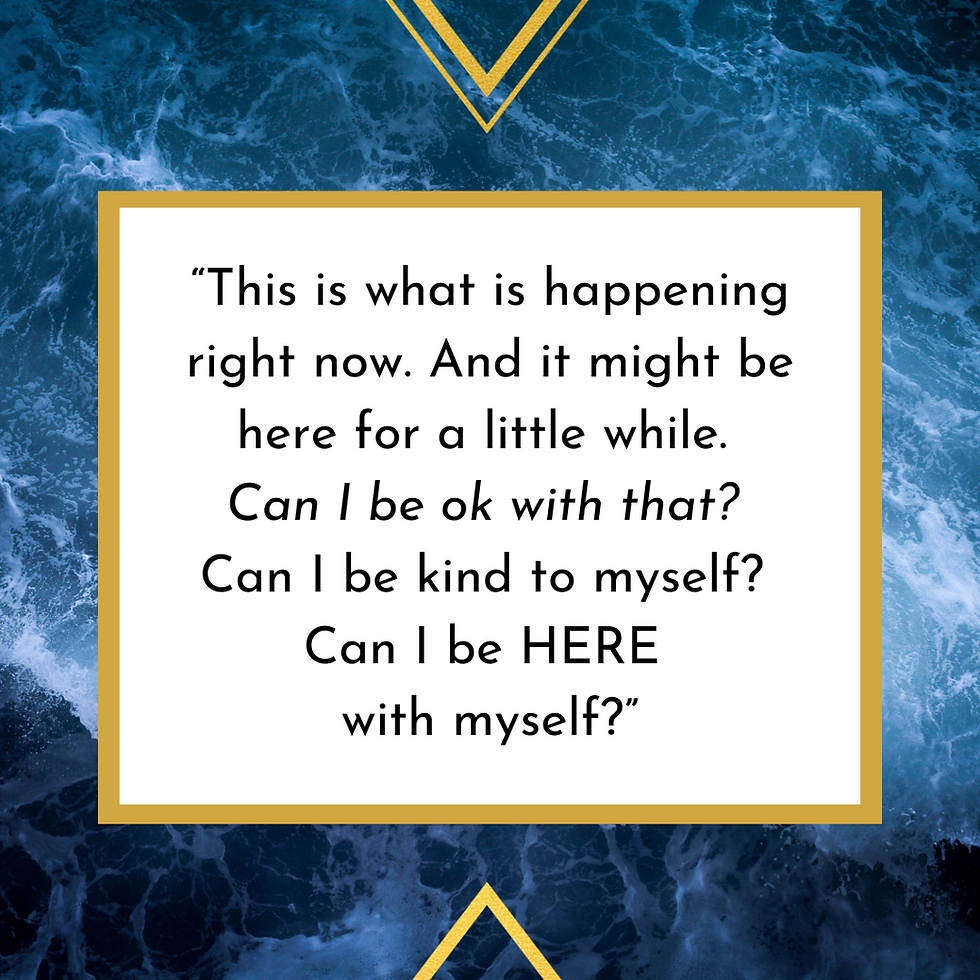
Acceptance and Surrender opened me to begin to trust again, and they helped me reconnect to my True Self, my Soul.
To practice cultivating acceptance, start with placing a hand on your heart. When you place your hand on your chest, you send a primitive message to your nervous system that you are being tended to, and your body releases oxytocin (which generates warm feelings of safety and support). Then say out loud, “This is what is happening right now. And it might be here for a little while. Can I be ok with that? Can I be kind to myself? Can I be HERE with myself?”
9. Connect with Your Soul
When we are in the thick of a body-soul shutdown, the amygdala and lower regions of the brain hijack our entire brain, and we are catapulted into the threat response (fight, flight, freeze). We begin to view every single thing through the clouded lens of fear: “Is this a threat? It must be a threat!”
If the symptoms of physical and emotional pain don’t abate, then the threat response continues to remain in the driver’s seat of our brains, ruling our body, mind, and emotions. (To better understand this process, check out this simple yet informative VIDEO on trauma and the nervous system)
Unfortunately, our body can literally get stuck in the threat response, and any empowering, non-fear-oriented feelings can seem like a faint and distant memory. We begin to lose faith, we are cut off from Trust, and we feel disconnected from our True Self.
One way to take back the driver’s seat, and reclaim our courage and confidence, is by connecting with our Soul (aka. Essence, True Self, or Wisest Self).
How do we reconnect with our Soul? By using our imagination.
Our brain often can’t tell the difference between the imagined and real (which can be to our advantage… or detriment). When we imagine something, a physiological response is generated in our bodies. We can literally soothe our body and nervous system by using our imagination.
During my body-soul shutdown, I would imagine I could connect with my Soul. I would imagine my Soul was a warm light in my heart that was helping steward my journey. I would imagine my Soul could share messages of wisdom with me. Before bed, I would imagine my Soul was holding me, like a mother embracing her child. And I would imagine my Soul could send healing energy to my body.
I would imagine this, and it would help calm and relax every cell in my body.
I don’t view ‘imagination’ like most people. I believe that our imagination can serve as a potent doorway to the unseen, but very real, other worlds. Just because we can’t see it, doesn’t mean it isn’t here. And just because we imagined it, doesn’t mean it isn’t also real.
During my body-soul shutdown, I needed more than just this world to guide me. I was fortunate enough to have doctors, therapists, friends, and an amazing partner. Their support was truly instrumental. And… what I was experiencing was so challenging, and so beyond this world, that I also needed something larger and wiser to help guide me.
I needed my Soul.
We all have a Soul—a true and wise self. This Self is unscathed by life’s traumas and pains. This wise inner Self is always here. We just need to be willing to use our imaginations to connect with our Soul and open to its wisdom and support.
Here is a simple practice to help you connect with your Soul:
1) Get in a comfortable seated or prone position. Take some deep breaths and place a hand on your heart. Feel the warmth of your hand meeting your heart.
2) Using your imagination, see if you can imagine your wisest Self is here inside of your heart. You can imagine your Soul is like a warm light glowing inside of you. Try not to judge the light if it feels small or faint.
3) Notice the color of this light in your heart. This is the color of your Soul.
4) Say hello to your Soul and sense how it greets you.
5) Notice how your body responds to this connection. What sensations do you feel?
6) Ask your Soul, “What do you most want me to know right now?” Open to any images, words, or feelings that arise.
7) See the color of your Soul and imagine flowing this warm, colored light throughout your whole body, sending soothing and healing energy to any area that needs it.
8) With your hand on your heart, say out loud, “I am here. I am here with myself.” Feel the truth of these words. You are here with yourself, and your wise and loving Soul is here with you. You are held and deeply loved.
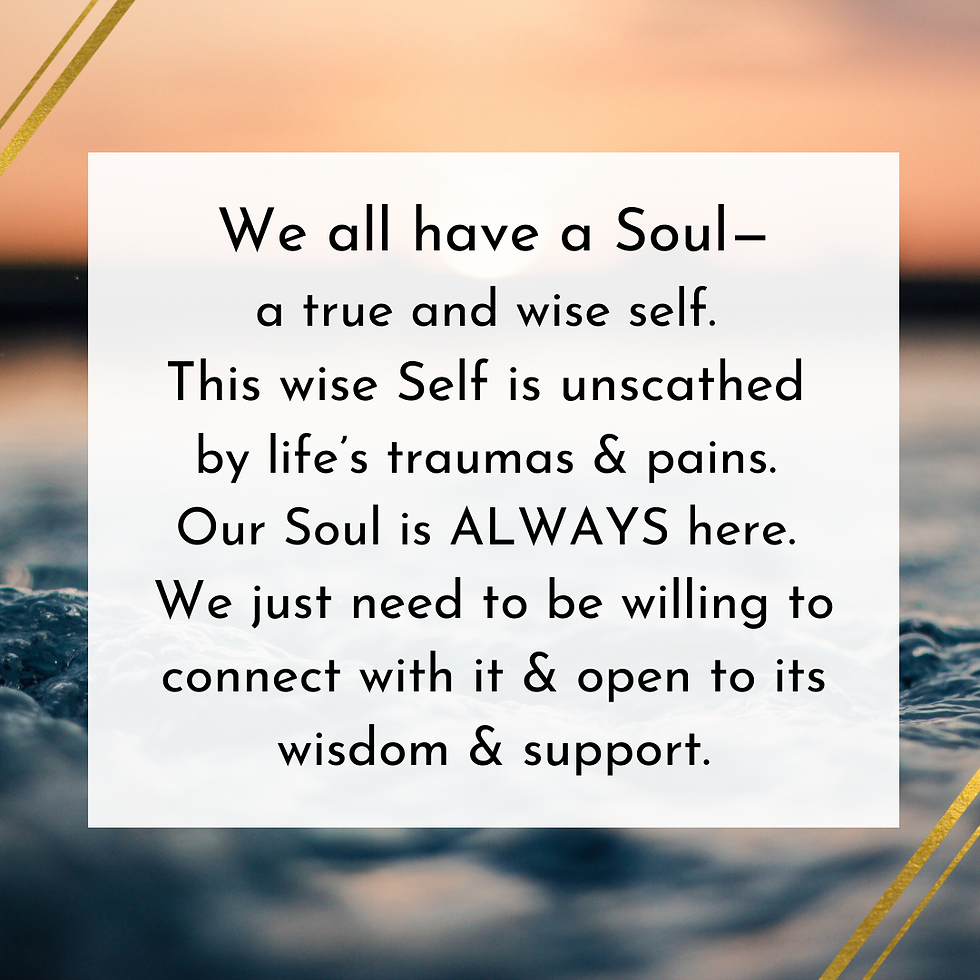
Pay attention to how your body feels after doing this practice. Does your nervous system feel a little more settled? Do you feel a little more connected to yourself? What wisdom did your Soul share with you?
When I did these practices, I noticed that the same message was showing up each time I connected with my body, inner parts, and Soul. The message was:
Stop.
Slow it all down.
You haven’t been taking good care of yourself.
You have been taking care of everyone else.
It is time to tend to yourself.
It is time to hold boundaries.
You will get through this.
Trust this process.
You are not alone.
I love you.
As you do this deeper work with your body, inner parts, and Soul, what message keeps showing up?
Body-soul shutdowns often reveal that we have been living a life that is out of alignment with our Soul. Our previous values and choices have been based on an outdated operating system. Your Soul is here to highlight that you have NEW values and needs. It is time to prioritize yourself. It is time to honor and love yourself.
Your Soul is throwing a tantrum to get you to slow down and listen. Are you willing to make the necessary changes to create a life that is based on who you really are?
Final Thoughts: The Healing & Recovery Process
My therapist said to me, “Either your body-soul shutdown will eventually come to an end, or if it doesn’t, you will continue to learn to create a healthier relationship with it. Either way, this experience will change.” These were hard words to swallow. The physical and emotional pain I experienced every day made it difficult for me to accept that this might be my long-term reality.
For some people, their body-soul shutdown symptoms are truly unbearable, and they can’t imagine a life if this pain doesn’t let up. My heart breaks for these individuals. And I get it.
My symptoms felt barely tolerable—and in some moments they were intolerable. For me, the light at the end of the tunnel was that each week I was noticing microscopic positive changes in my symptoms. Perhaps these changes were happening because of all the tools I was using? Or all the support I was calling in? Or the boundaries I was making? Or the fact that I was finally sleeping? Or that the mold toxicity was starting to die down? I don’t know.
But noticing these small changes felt promising, and I held out the hope that my body-soul shutdown would eventually end. At the same time, I knew I needed to be realistic. So, every day I continued to coach myself, “I am doing everything in my power to build a healthy relationship with myself and this experience. If this experience never fully goes away, I will be ok. I will be here with myself in this.” Sometimes this statement felt true and sometimes it didn’t.
Once I was out of the acute phase of my body-soul shutdown, a few key things were instrumental in my recovery:
Boundaries, Boundaries, Boundaries
I continued to uphold all the boundaries I made during my body-soul shutdown (some of them I modified slightly when I became more resourced). Before I started working with clients again, I took the time to connect with my inner parts and Soul. Together we made clear agreements about my ideal work and schedule. When I would slip back into being my mom’s therapist or over-extending with a friend, I would lovingly call myself out and recommit to my new agreements.
Find a Good Doctor
I met with a doctor in Denver, CO specializing in mold toxicity and Lyme disease. My intuition kept telling me that I had spent many months exploring the “soul” part of my body-soul shutdown, but that I still needed to focus on the “body” piece. I did extensive lab work and discovered that I had severe mold toxicity. Since then, I have been using supplements to safely detox from the mold. Working with this doctor and having his support has been a game-changer in terms of my health. I feel like I have my body back for the first time in over three years. I believe that spirituality and science don’t need to be mutually exclusive. When we have a big physiological response, yes, do the inner work, AND (if finances allow) work with a good doctor to explore a health-related explanation as well. The terrifying rollercoaster of my body-soul shutdown would have been SO much friendlier had I known that I had mold toxicity.
Don’t Create a Small Life
Once I got through the birth canal of my body-soul shutdown, it felt tempting to create a small and armored life, to protect myself from going through that again. But just like a child that falls off her bike, dusts herself off, and gets back on it… I want to urge you to get back on that bike. Everything may feel scary for a while—like talking to people, leaving the house, going to the store, holding boundaries, or having that challenging conversation. It will feel scary, and slowly, gently, step by step, do these things. Don’t let fear, or the fear of this experience happening again, make your life small. Fear doesn’t get to win.
Introduce Healthy Activation
After my body-soul shutdown, I wanted to stay away from anything that felt too stimulating or activating (like dramatic movies, driving, having sex, too much laughter, loud music, or being around too many people). Initially, this felt like an important boundary to hold. I knew my nervous system was still healing and any activation (even if it was “positive activation”) was too much. However, as I started to recover, I consciously introduced healthy activation to grow my nervous system's resiliency. I would go into a grocery store and talk to the cashier, or I would get on my motorbike and slowly drive around the block. As you feel ready, dip your toe into mildly activating things. Notice and appreciate how your nervous system becomes more resilient.
Cultivate Trust
Many people say that the opposite of fear is love. I believe the opposite of fear is Trust. Cultivating trust supports our continued healing, recovery, and thriving. Unfortunately, our brains have a “negativity bias” (we developed this negativity bias for our survival—so that we were more likely to spot the lion that was about to attack us). It is easy to dwell on the negative and traumatic experience of a body-soul shutdown, and we can get stuck in this fearful orientation to life. To cultivate trust, remind yourself of all the things that got you through this experience and all the support that showed up along the way. Focusing on the gifts, the grace, the support, and the healing will help you cultivate trust again. When an “echo” of your body-soul shutdown resurfaces (which can happen through illness, burnout, covid, heartbreak, etc.), the inner Trust you have cultivated will buoy you from the fear and steward you through the dark waters.

Whatever experience you are having right now, I hope my personal story and these practices will inspire you to not lose hope and to remember you are not alone.
Over the last year, I have heard from numerous friends and clients who have journeyed through the dark underworld of their Souls. For some of them, burnout or an illness took them there. For others, a divorce or the sudden loss of a loved one brought them to their knees.
Whatever you are facing in this moment, remember…
Don’t give up.
You got this.
Trust yourself.
Trust this process.
You are not alone.
You are so loved.
I love you.
Click below to download and save this article
Comments